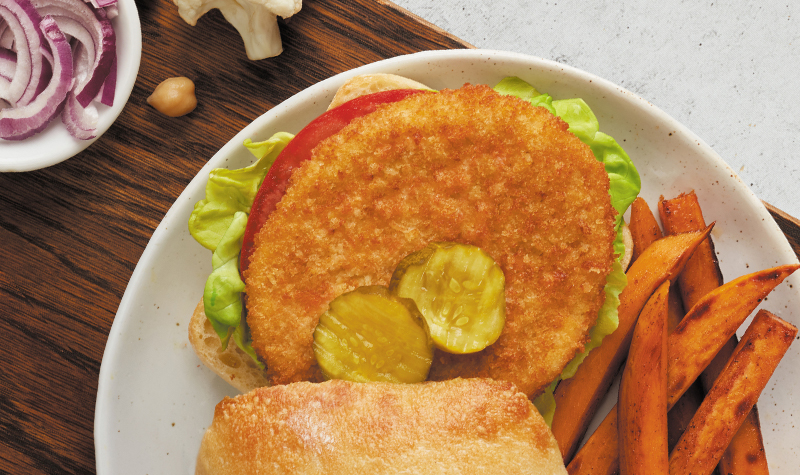Consumers Crave Healthy, Functional Ingredients
Published on: 10/30/2020 in All, Culinary Trends, Profit Driving Tips
Published on: 10/30/2020 in All, Culinary Trends, Profit Driving Tips

When dining out, more than half of consumers (58 percent) say it’s difficult to eat healthy.1 While the U.S. Department of Agriculture and Food and Drug Administration regulate the term “healthy” on packaged foods, it’s an ever-evolving term to consumers within the context of dining choices. To appeal to consumers who prioritize healthy eating, stay current on what the label means to most consumers and incorporate the ingredients, names and menu descriptions that satisfy these triggers.
Technomic reports that immune-boosting ingredients are still highly sought after and suggests calling out these specific nutrients on the menu to attract interest.2 For example, today’s consumers have learned to look for immunity-boosting ingredients like anthocyanin, often found in red, purple, blue or black plants like blueberries and raspberries. Operators also are promoting leafy greens as a means to relieve stress.3
The clean-label movement sweeping the food industry incorporates such “feel-real” factors as all-natural and no preservatives, artificial additives, hormones or unnecessary antibiotics. In fact, the fewer ingredients, the better, and those used must be easily recognized and understood by consumers. Transparency by food distributors and operators assures consumers that these guidelines have been honored.
A significant 81 percent of health-conscious consumers say they care more about real ingredients than calories when dining out.1 Among the many “free-from” food product claims the industry makes, consumers consider hormone-free and antibiotic-free most important.4
Because consumers tend to scrutinize what is (and isn’t) in their poultry, distributors and operators should commit to sourcing clean products such as PERDUE® HARVESTLAND® Chicken and Turkey. PERDUE® HARVESTLAND® poultry stands apart because the animals are fed an all-vegetarian diet but aren’t given hormones, steroids or antibiotics and aren’t confined in cages.
Notably, 62 percent of surveyed consumers say general well-being motivates their desire to eat healthfully; 47 percent say they do so to lose weight.5 It’s not surprising, then, that functional foods with positive health attributes are more sought after than foods which minimize negatives (as in low-calorie, low-sugar and low-sodium). What’s more, half of surveyed consumers agree that high-nutrient content is more important than “free-from” claims.4
Adding functional ingredients or superfoods has become an increasingly popular menu-development strategy. Including the word “power” in a dish’s name is one way to signal to diners that it contains superfoods. Red Mango, for example, recently partnered with Pitaya Foods, a superfruit supplier, to add four Power Bowls to its lineup. The Pink Bowl features dragon fruit, while two other bowls include acai. Qdoba, meanwhile, is testing a Cauli-Mash Low-Carb Chicken Bowl that capitalizes on the much-touted health halo cauliflower is currently enjoying.2
For now, consumers focused on healthy dining choices are gravitating to clean labels, functional foods and protein. But their priorities are always subject to change. Evaluate and adjust your offerings and messaging to meet consumers’ evolving “healthy” criteria to remain relevant and capture their business.